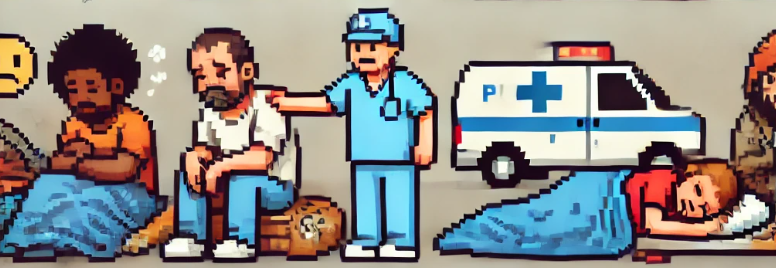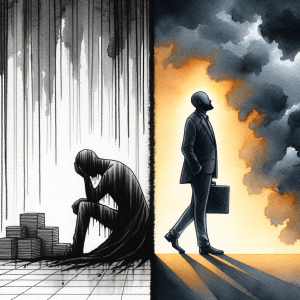
Homelessness in Los Angeles: Facing Discrimination and Violence
Homelessness is a pressing issue in Los Angeles County (LAC), where many individuals face daily challenges that extend beyond finding shelter and food. In light of the recent Supreme Court decision that upholds the right to ban sleeping outside (so criminalization), let’s take a closer look at other challenges faced by people experiencing homelessness (PEH).
Recent research in the American Journal of Preventative Medicine has shed light on the alarming rates of discrimination and violence experienced by PEH in LAC, emphasizing the urgent need for public health interventions and support systems.
Understanding the Problem
People experiencing homelessness are some of the most vulnerable individuals in society. They often face discrimination and violence, which further deteriorate their already precarious living conditions. In LAC, a recent study surveyed 332 PEH between April and July 2023 to understand the extent of these issues.
The results were startling. Over half of the respondents reported experiencing discrimination at least once a week, and almost a third faced discrimination daily. Additionally, 16% of the participants experienced physical violence, and 7.5% encountered sexual violence within the past month. These figures are significantly higher than those reported for the general population in major U.S. cities, where annual rates of physical and sexual violence are much lower.
The Impact of Discrimination
Discrimination against PEH often stems from negative stereotypes and societal stigma. In the study, nearly half of the respondents who faced discrimination believed it was due to their homelessness. This perception highlights the deep-rooted biases that PEH encounters daily.
Discrimination can have severe consequences on both mental and physical health. It contributes to psychological distress, leading to increased substance use and other risky behaviors. The study found that discrimination was particularly associated with those living unsheltered in vehicles or outdoors, engaging in weekly illicit drug use, and experiencing psychological distress.
The Reality of Violence
Violence against PEH is another critical issue highlighted by the study. Physical violence was most commonly reported by those living in shelters or unsheltered outdoors, and it was linked to having physical health conditions and psychological distress. Similarly, sexual violence was more prevalent among non-male individuals and those living unsheltered outdoors.
These findings underscore the dangerous environments in which many PEH live. The constant threat of violence not only harms their immediate well-being but also perpetuates a cycle of trauma and vulnerability.
Why This Matters
The study’s findings are a stark reminder of the harsh realities faced by PEH in LAC. For public health practitioners, these insights are crucial for developing effective interventions. Addressing discrimination and violence is not just about improving individual lives; it’s about creating a more just and equitable society.
Public health initiatives must focus on providing safe and supportive environments for PEH. This includes enhancing security in shelters, offering trauma-informed care, and ensuring quick access to housing through programs like Housing First, which prioritizes giving PEH immediate housing placements along with supportive services.
Moving Forward
To combat the high levels of discrimination and violence against PEH, it is essential to integrate tailored services into existing programs. For instance, Housing First programs should include support for survivors of violence. Additionally, public health campaigns can help reduce stigma and educate the public about the challenges faced by PEH.
Further research is needed to explore the intersections of multiple identities (such as race and gender) and their impact on victimization risk. This knowledge can help tailor interventions to meet the specific needs of diverse groups within the PEH population.
Discussion Questions
- Have you witnessed or experienced discrimination against homeless individuals in your community? How did it make you feel?
- What measures do you think could be implemented to reduce violence against people experiencing homelessness?
Conclusion
The high rates of discrimination and violence PEH face require immediate and sustained efforts from public health practitioners, policymakers, and community organizations. By addressing these issues head-on, we can work towards a future where everyone, regardless of their housing status, can live with dignity and safety.
Feel free to share your thoughts in the comments or on social media using #SupportPEH.
Empower Your Network – Subscribe and Share!
Unlock key insights with ‘This Week in Public Health.’ Subscribe for free and share to drive change as part of a dedicated community.



